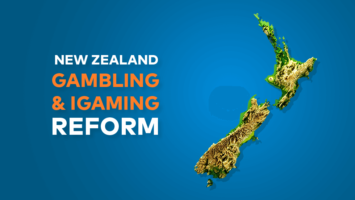User retention in iGaming – UX Q&A session

Customer Retention Rate (CRR) shows how many players have stayed with us for a longer time. This metric is crucial for evaluating the effectiveness of user engagement strategies and identifying trends in player behavior over time. By analyzing CRR, businesses can understand which retention strategies are successful and where improvements are needed. It is important to note that this value is calculated based on the preceding period. For example, if the CRR in March is 32.86%, it means 32.86% of users from February were retained until March.
Customer retention formula
Understanding and calculating the CRR is essential for assessing the effectiveness of retention strategies in the iGaming sector. The formula is straightforward:
Formula: ((U- NU) / PU)) * 100
- U – Total current users
- NU – New current users
- PU – Previous Total users
This formula gives an idea about how many of the players are still active in the platform in question during the set period. A high CRR means in most cases, that good retention strategies have been set in place, while a low CRR could mean there is an achieved negative trend or anomaly that needs to be examined. Continuously monitoring this KPI will put the iGaming operator in an advantaged position to make decisions that result in an improved user experience and selected retention initiatives.
Is a high Customer Retention Rate always a sign of success?
It depends. However, it should never be the only indicator by which we evaluate a casino. Depending on the stage of business development the casino is in, a high or low retention rate can be equally alarming for the owners.
For example, a high retention rate may signal mature positioning in the market for a long-established casino with a strong player base, yet it may show stagnation when new player acquisition slows down. Being exclusively dependent on CRR as an indication of success may, in fact, fail to seize the growth opportunities, since attention would then shift from acquiring new players to merely sustaining.
When do we care about improving retention?
When this indicator is low and regularly returning users are a valuable and likely occurrence. This is particularly relevant in the online gambling industry. We want the number of returning players to increase because ultimately, they generate the most value.
How to use the CRR in the iGaming industry?
Depending on the industry and objective, we can adopt different time frames for the CRR indicator. The most universal timeframe for tracking will be monthly intervals. This allows for sustainable monitoring of player retention, providing enough data to identify trends while still allowing quick response to changes.
This is not the only way. If we have introduced a change, promotion, new game, or platform update, we will use a weekly timeframe. By precisely comparing weekly periods, we can determine the impact of the introduced changes on retention.
If we have been in the market for over 2 years and have noticed seasonal behaviors, such as during the holiday season or other annual events, we can also gather insights. The CRR from a specific event will indicate its impact compared to a month without that event. Comparing the same periods with the previous year will show how effective these actions were compared to previous ones. If we compare identical periods and actions, a low CRR will suggest the need for changes!
Where do we start working on UX to improve retention in iGaming?
We start by determining the period in which we measure retention. The impact we will have on this indicator will be closely related to the timeframe we choose. Next, we need to understand the context. To determine the reasons for the current state, we must establish what value the CRR indicator represents. This will allow us to set a target value to strive for. This set of information and determinations will help us reflect on the causes of the current situation. By knowing or estimating these causes, we will be able to take actions aimed at changing it.
In what period do we want to influence user retention?
Different actions will be good for momentary mobilization, while others will have a long-term impact. In the context of UX, we generally refer to longer periods. Some changes may even result in a temporary decrease in regular users. People usually need time to adjust to new things. There is no need to worry.
What was the CRR rate? What is the current CRR rate? What result do we want to achieve?
By understanding our users’ behaviors, we can hypothesize the changes necessary to improve retention and estimate the time it will take to implement them. Ideally, we would compare our CRR to industry standards or market benchmarks, making our predictions more grounded. However, breaking the mold is still possible. Recognizing that we have a plan allows us to consider unconventional strategies. By doing what others overlook, we can achieve unique and impactful results.
We know how it was and we know what we want. What’s next? Where does UX come in?
To clarify, everything discussed above is part of UX. Crafting effective user experiences often overlaps with marketing, strategy, and data analysis. However, what sets UX apart is its focus on diagnosing the underlying reasons behind user behavior. This means looking beyond just what users do and instead exploring why they do it.
Identifying the core issues
Understanding why players leave or stay requires examining the experience from their perspective. Even the smallest design flaws or navigational hiccups can cause frustration, pushing users away. If we’re not asking why this is happening, we’re missing a vital piece of the puzzle.
Common UX challenges in iGaming
- Non-intuitive and inconsistent navigation – imagine finding a well-organized game category on the homepage, only to lose it completely on the games page where filtering is no longer an option. This inconsistency disrupts the flow and increases cognitive load.
- Excessive steps for simple actions – players may abandon the site if it takes multiple clicks just to locate their favorite game.
- Emphasizing less important elements – if bonuses, which often draw users, are hidden behind complex menus, while less engaging features like registration are spotlighted, it skews priorities.
- Lack of personalization options – players increasingly expect sites to adapt to their preferences—if customization is absent, users may feel disconnected.
- Poor visual appeal and usability – a website that doesn’t adhere to industry standards or is overwhelmed with cluttered graphics can easily become off-putting.
Beyond visuals – the hidden UX factors
It’s also important to remember that not all of UX is visible. For example:
- Offer relevance – how promotions and bonuses align with what players need or are interested in. If they don’t align, there’s a good chance players will become apathetic.
- Language options – poor language support alienate international players from using your online gambling platform.
- Technical performance – even the prettiest site in the world will tank if load times are slow, technical glitches persist, or if their mobile responsiveness sucks.
User experience is more than a checklist. It’s an ongoing exploration into why players act the way they do. Why did they drop off during a particular step? Why are certain games underperforming? Without diving into these questions, we risk treating symptoms rather than solving the underlying problems.
How does UX action help improve retention?
It all depends on what the cause of the problem is. When we know the cause, the solution itself is not such a big challenge. The proposed solutions also do not have to be spectacular or beautiful. If that were the case, only a graphic designer and a developer would be involved in the design process. The greatest role of UX Design lies in discovering or estimating, based on experience and knowledge, the reasons why the retention rate is not satisfactory. Only such an approach, combined with implementing changes and monitoring the CRR indicator, provides an answer as to whether our actions are heading in the right direction.
What UX methods can be used to find the cause of low retention?
To determine this, qualitative and quantitative methods are used. Here is a list of the most popular methods, research, and tools.
Qualitative methods include:
- Desk Research
- Competitive analysis
- User journey mapping
- User feedback
- Surveys and questionnaires
- In-depth interviews
- Usability testing
- Card sorting
- Heuristic evaluation
- A/B testing
- User diaries
- Focus groups
Quantitative methods include:
- Desk Research
- Analysis of analytical data (e.g., Google Analytics)
- Heatmaps (e.g., Hotjar)
- Surveys and questionnaires
- Eye tracking
- Card sorting
Summary
Regardless of which parameter we want to improve, we need a considerable amount of information to consciously influence it. The more we learn about our users, the better our product or service will be.





















